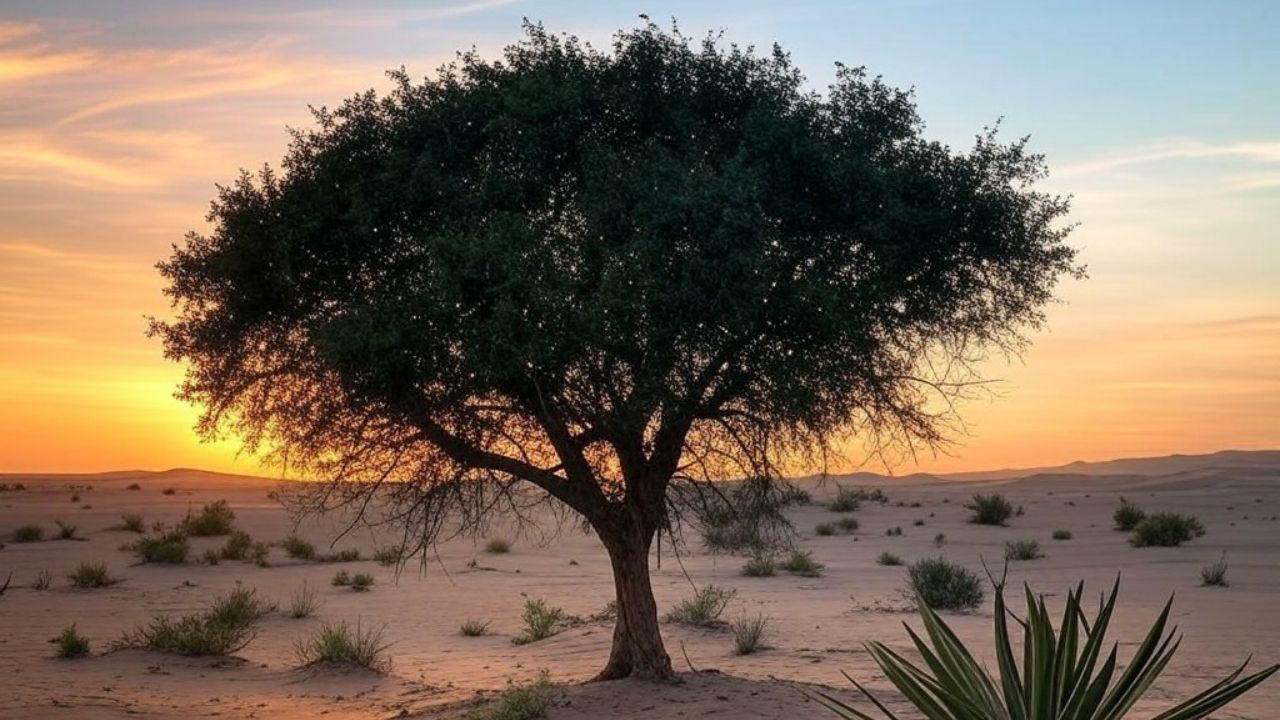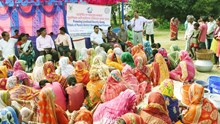
Khejri, scientifically known as Prosopis cineraria, is often referred to as the ‘Kalp Taru’ (Tree of Life) of the Thar Desert. An integral part of Rajasthan’s agricultural landscape, this hardy tree belongs to the Fabaceae family and thrives in some of the harshest climatic conditions where most plants cannot survive.
Widely found across Rajasthan, Gujarat, Haryana, Punjab, Delhi, and parts of South India, Khejri plays a vital role in sustaining the local ecosystem while offering a reliable source of income to farmers. Its resilience and utility make it a cornerstone of both the environment and the farming economy in these arid regions.
Importance of Khejri
Khejri has been a lifeline for desert dwellers for centuries. The leaves of the tree serve as nutritious fodder for livestock. The pods are consumed as a vegetable by humans. The tree also plays a crucial role in improving soil fertility by fixing atmospheric nitrogen. Its deep roots help in retaining moisture in the soil which makes it a vital component of agroforestry systems. Farmers in Rajasthan and nearby states benefit greatly from this tree due to its multiple uses, including timber, fuel, food, and medicine.
Nutritional Value
The immature pods of Khejri, commonly known as ‘Sangri,’ are rich in essential nutrients. They contain about 18% crude protein, 56% carbohydrates, and significant amounts of phosphorus, calcium, and iron. These pods are consumed fresh or dried. Sangri is widely used in Rajasthani cuisine. The dried pods can also be powdered and used in bakery products like biscuits and cookies, offering an alternative to conventional grains.
Cultivation and Production Technology
This tree requires minimal inputs for growth and is a good choice for dryland farming. Khejri was traditionally propagated through natural means, but improved cultivation has enhanced its productivity. Scientists have devised methods like patch budding, where wild Khejri trees are converted into high-yielding varieties. Central Institute of Arid Horticulture, Bikaner, developed the 'Thar Shobha' cultivar. This cultivar is characterized by early pod production with high quality.
Seeds from mature pods are collected and treated with Thiram. They are inoculated in polythene bags filled with a mixture of sand, clay, and goat manure. Budding is made after one year for better quality plants. Plants take about 40-50 days to be transplanted into the field. The ideal transplanting time is in July, August, or September to ensure high survival rates.
Orchard Establishment and Maintenance
Khejri trees need proper training and pruning to maintain high productivity. The upper portions of the tree should be pruned to encourage healthy growth. Lopping, or cutting branches for fodder, is a common practice in Rajasthan. It has been found that trees lopped at three-year intervals produce more leaf fodder than those pruned annually.
The tree starts to fruit after 8-10 years when directly grown from seeds. The improved propagation techniques allow it to start its yield within three years. The ideal time for harvesting immature pods is within two weeks of fruit setting. This would provide the greatest nutritional content possible.
Economic Benefits of Khejri Cultivation
Khejri plantation is highly rewarding. Farmers can gain from different parts of the tree: leaves, pods, and timber. The estimated annual net return is about Rs 1,54,969 per hectare.
-
Income from dry leaves (25 kg per plant): Rs 34,750/ha
-
Income from tender pods (15 kg per plant): Rs 83,400 per hectare
-
Income from dehydrated pods (5.5 kg per plant): Rs 91,740 per hectare
Khejri farming is even more profitable than many other crops in arid regions with a benefit-cost ratio of 8.6.
Utilization and Value Addition
All parts of the Khejri tree are utilizable. Its wood is used as timber and fuel and the leaves form high-quality fodder. The green pods are used as vegetables and the dried pods are powdered for chapatis and biscuits. It is also medicinal in use because its gum, bark, and seeds are applied in folk medicine. Its seeds also give oil. The oil further increases its commercial value.
Agroforestry Benefits
Khejri is an excellent agroforestry component. It provides support to other crops like moth beans, guar, and bajra, which are cultivated in the region of Rajasthan. Research has proved that fruit trees like amla, ber, guava, and pomegranate grow well under the canopy of Khejri, thereby increasing farm productivity.
Processing and Market Potential
The market demand for Khejri products, especially dehydrated Sangri, is very high. Poor processing techniques, however, usually reduce its quality. Research has shown that fresh pods blanched in 2% salt solution for five minutes retain their color and enhance their appeal. Prolonged blanching affects the taste negatively.
Similarly, efforts have been made to formulate cookies using dried Khejri pods. It was found that the best result in terms of taste and texture came out when 10% wheat flour was replaced by the powder extracted from the same fruit. This finding opens up new market opportunities for processed food prepared from Khejri.
Khejri is a resilient tree ideal for dryland farming, enhancing soil fertility and providing diverse economic benefits to arid region farmers. Its improved propagation and processing techniques can boost farmer incomes while supporting sustainable agriculture. Value-added products from Khejri cultivation help preserve fragile ecosystems in India's arid zones.
















